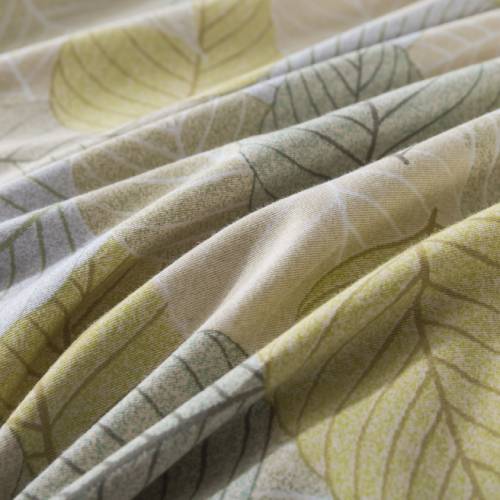When it comes to choosing a mattress, one factor that often gets overlooked is thickness. While many people focus on mattress type (memory foam, innerspring, latex, etc.), the thickness of a mattress can significantly impact your sleep quality, comfort, and even your health. Mattress thickness is more than just a cosmetic feature; it can influence how well a mattress supports your body, its durability, and even how easy it is to get in and out of bed.
In this blog, we'll explore the importance of mattress thickness, how to choose the right thickness for your needs, and why this factor matters more than you might think.
Understanding Mattress Thickness
What Does Mattress Thickness Mean?
Mattress thickness refers to the total height of the mattress, usually measured from the bottom to the top surface. It is typically expressed in inches or centimeters, and most mattresses fall within the range of 6 to 14 inches in thickness. However, mattresses can be as thick as 18 to 20 inches, especially for luxury or hybrid models.
A mattress's thickness consists of several layers, each contributing to its overall comfort and support. These layers usually include:
- Comfort Layer: The top layer, designed to provide cushioning and support. It can be made from materials like memory foam, latex, or other soft materials.
- Support Layer: Below the comfort layer, this part provides the necessary firmness and structure to support your body. It’s usually made from high-density foam, coils, or a hybrid of materials.
- Base Layer: The bottom layer provides foundational support and helps maintain the mattress’s shape and durability over time.
Different Thickness Levels
Mattresses come in various thicknesses, and each level can offer different benefits depending on individual needs and preferences:
Low Profile Mattresses (6-8 inches): These are thinner and often used for children, guest rooms, or temporary sleeping solutions. They are easier to move and usually more affordable but may not offer enough support for regular use by adults.
Standard Thickness (9-12 inches): The most common thickness range, providing a balance between support and comfort. Suitable for most people, standard thickness mattresses are versatile and available in various materials and designs.
Thicker Mattresses (13-16+ inches): Thicker mattresses often provide a luxurious feel with additional cushioning and layers. They tend to offer more support, especially for heavier individuals or those who prefer a plush feel.
Why Mattress Thickness Matters
Support and Spinal Alignment
One of the main reasons mattress thickness is important is the role it plays in supporting your body and maintaining proper spinal alignment. A mattress that’s too thin may not provide adequate support, leading to pressure points, particularly in areas like the shoulders, hips, and lower back. This lack of support can result in discomfort and even long-term back issues.
A thicker mattress often has more layers of supportive materials, like high-density foam or coils, which can evenly distribute your body weight and help keep your spine in a neutral position. This is especially important for side sleepers and heavier individuals, as their bodies may sink deeper into a thinner mattress, leading to improper spinal alignment.
Durability and Longevity
Mattress thickness is also directly related to its durability. Thicker mattresses, especially those with multiple layers, tend to be more durable and resilient. Over time, a thinner mattress may sag or lose its shape faster due to less material being available to absorb and distribute weight. A thicker mattress generally lasts longer because it has more supportive layers to withstand daily use.
If you’re looking for a mattress that will hold up well over the years, opting for a thicker mattress can offer better long-term value.
Comfort and Pressure Relief
Comfort is subjective and varies from person to person, but mattress thickness can have a significant impact on how comfortable you feel during sleep. Thicker mattresses usually have more cushioning layers, making them ideal for individuals who prefer a softer, more plush feel.
Additionally, the extra layers found in thicker mattresses can provide better pressure relief, especially for people with joint pain or conditions like arthritis. The increased cushioning reduces the risk of creating pressure points that can cause discomfort during the night.
For example, if you’re a side sleeper, a thicker mattress with a soft comfort layer can relieve pressure on your hips and shoulders, allowing for a more restful sleep.
Who Benefits Most From a Thicker Mattress?
Heavier Individuals
For heavier people, a thicker mattress can make a world of difference. The extra layers provide much-needed support and prevent the mattress from sagging prematurely. Thinner mattresses often don’t offer enough resistance to support higher body weights, which can lead to discomfort and the mattress breaking down faster.
A mattress that is at least 12-14 inches thick is generally recommended for heavier individuals, as it provides better body weight distribution and prevents excessive sinking into the mattress. This not only ensures comfort but also helps prolong the lifespan of the mattress.
Couples
If you share a bed with a partner, a thicker mattress can help reduce motion transfer, which means you’re less likely to feel your partner’s movements during the night. This is particularly beneficial if one person is a light sleeper.
Additionally, a thicker mattress can provide better edge support, making it easier for both partners to utilize the entire sleeping surface without feeling like they’re going to roll off the edge.
Side Sleepers
As mentioned earlier, side sleepers often benefit from a thicker mattress because it provides extra cushioning for the hips and shoulders. Side sleepers tend to put more pressure on these areas, and a mattress that’s too thin can cause discomfort and misalignment of the spine.
A mattress that’s at least 10-12 inches thick is typically recommended for side sleepers to ensure proper pressure relief and comfort.
Who Might Prefer a Thinner Mattress?
Children and Teenagers
Children and teenagers don’t usually require the same level of support as adults, especially since they weigh less and are still growing. A thinner mattress in the 6-8 inch range can provide adequate comfort for children and is often more affordable. These mattresses are also easier to move, which can be convenient as kids grow and transition from smaller to larger beds.
People with Mobility Issues
For individuals with mobility issues or seniors, getting in and out of bed can be a challenge with a thicker mattress. A mattress that’s too thick may sit too high on the bed frame, making it difficult to climb in and out of bed easily. In these cases, a thinner mattress or one that sits closer to the ground might be a better option.
Choosing the Right Mattress Thickness for You
Now that we’ve explored the benefits and considerations of different mattress thicknesses, how do you choose the right one for your needs?
Factors to Consider
Body Weight: Heavier individuals should consider a thicker mattress to ensure proper support and longevity. A mattress that is 12-14 inches thick is generally ideal for those weighing more than 250 lbs.
Sleeping Position: Side sleepers benefit from thicker mattresses (10-12 inches) to provide extra cushioning for pressure points. Back and stomach sleepers may find comfort in thinner mattresses, as long as they provide adequate support for spinal alignment.
Comfort Preference: If you prefer a plush, luxurious feel, a thicker mattress with multiple comfort layers may suit you better. If you prefer a firmer feel, a thinner mattress can offer a more solid sleep surface.
Bed Height: Consider the height of your bed frame in combination with your mattress thickness. A very thick mattress on a tall bed frame may make it difficult to get in and out of bed comfortably.
Mattress Thickness and Bed Frames
Your bed frame should also be taken into account when selecting mattress thickness. Some bed frames, particularly those with slats or a platform base, may not be designed to support a very thick mattress. Make sure your bed frame can accommodate the thickness of the mattress you choose without affecting its overall support.
Additionally, for bunk beds or loft beds, a thinner mattress is often required for safety reasons, as a thicker mattress may sit too high and pose a risk of falling.
Conclusion
Mattress thickness is more than just a matter of comfort or aesthetics; it can influence your sleep quality, support, and even the durability of your mattress. Understanding the differences between thin and thick mattresses and how they cater to different sleeping preferences and body types can help you make an informed decision. Whether you prefer the plush feel of a thick mattress or the firm support of a thinner one, choosing the right thickness can lead to better sleep and overall health benefits.







